Dexrazoxane for preventing or reducing cardiotoxicity in adults and children with cancer receiving anthracyclines
- PMID: 36162822
- PMCID: PMC9512638
- DOI: 10.1002/14651858.CD014638.pub2
Dexrazoxane for preventing or reducing cardiotoxicity in adults and children with cancer receiving anthracyclines
Abstract
Background: This review is the third update of a previously published Cochrane Review. The original review, looking at all possible cardioprotective agents, was split and this part now focuses on dexrazoxane only. Anthracyclines are effective chemotherapeutic agents in the treatment of numerous malignancies. Unfortunately, their use is limited by a dose-dependent cardiotoxicity. In an effort to prevent or reduce this cardiotoxicity, different cardioprotective agents have been studied, including dexrazoxane.
Objectives: To assess the efficacy of dexrazoxane to prevent or reduce cardiotoxicity and determine possible effects of dexrazoxane on antitumour efficacy, quality of life and toxicities other than cardiac damage in adults and children with cancer receiving anthracyclines when compared to placebo or no additional treatment.
Search methods: We searched CENTRAL, MEDLINE and Embase to May 2021. We also handsearched reference lists, the proceedings of relevant conferences and ongoing trials registers.
Selection criteria: Randomised controlled trials (RCTs) in which dexrazoxane was compared to no additional therapy or placebo in adults and children with cancer receiving anthracyclines.
Data collection and analysis: Two review authors independently performed study selection, data extraction, risk of bias and GRADE assessment of included studies. We analysed results in adults and children separately. We performed analyses according to the Cochrane Handbook for Systematic Reviews of Interventions.
Main results: For this update, we identified 548 unique records. We included three additional RCTs: two paediatric and one adult. Therefore, we included a total of 13 eligible RCTs (five paediatric and eight adult). The studies enrolled 1252 children with leukaemia, lymphoma or a solid tumour and 1269 participants, who were mostly diagnosed with breast cancer. In adults, moderate-quality evidence showed that there was less clinical heart failure with the use of dexrazoxane (risk ratio (RR) 0.22, 95% confidence interval (CI) 0.11 to 0.43; 7 studies, 1221 adults). In children, we identified no difference in clinical heart failure risk between treatment groups (RR 0.20, 95% CI 0.01 to 4.19; 3 studies, 885 children; low-quality evidence). In three paediatric studies assessing cardiomyopathy/heart failure as the primary cause of death, none of the children had this outcome (1008 children, low-quality evidence). In the adult studies, different definitions for subclinical myocardial dysfunction and clinical heart failure combined were used, but pooled analyses were possible: there was a benefit in favour of the use of dexrazoxane (RR 0.37, 95% CI 0.24 to 0.56; 3 studies, 417 adults and RR 0.46, 95% CI 0.33 to 0.66; 2 studies, 534 adults, respectively, moderate-quality evidence). In the paediatric studies, definitions of subclinical myocardial dysfunction and clinical heart failure combined were incomparable, making pooling impossible. One paediatric study showed a benefit in favour of dexrazoxane (RR 0.33, 95% CI 0.13 to 0.85; 33 children; low-quality evidence), whereas another study showed no difference between treatment groups (Fischer exact P = 0.12; 537 children; very low-quality evidence). Overall survival (OS) was reported in adults and overall mortality in children. The meta-analyses of both outcomes showed no difference between treatment groups (hazard ratio (HR) 1.04, 95% 0.88 to 1.23; 4 studies; moderate-quality evidence; and HR 1.01, 95% CI 0.72 to 1.42; 3 studies, 1008 children; low-quality evidence, respectively). Progression-free survival (PFS) was only reported in adults. We subdivided PFS into three analyses based on the comparability of definitions, and identified a longer PFS in favour of dexrazoxane in one study (HR 0.62, 95% CI 0.43 to 0.90; 164 adults; low-quality evidence). There was no difference between treatment groups in the other two analyses (HR 0.95, 95% CI 0.64 to 1.40; 1 study; low-quality evidence; and HR 1.18, 95% CI 0.97 to 1.43; 2 studies; moderate-quality evidence, respectively). In adults, there was no difference in tumour response rate between treatment groups (RR 0.91, 95% CI 0.79 to 1.04; 6 studies, 956 adults; moderate-quality evidence). We subdivided tumour response rate in children into two analyses based on the comparability of definitions, and identified no difference between treatment groups (RR 1.01, 95% CI 0.95 to 1.07; 1 study, 206 children; very low-quality evidence; and RR 0.92, 95% CI 0.84 to 1.01; 1 study, 200 children; low-quality evidence, respectively). The occurrence of secondary malignant neoplasms (SMN) was only assessed in children. The available and worst-case analyses were identical and showed a difference in favour of the control group (RR 3.08, 95% CI 1.13 to 8.38; 3 studies, 1015 children; low-quality evidence). In the best-case analysis, the direction of effect was the same, but there was no difference between treatment groups (RR 2.51, 95% CI 0.96 to 6.53; 4 studies, 1220 children; low-quality evidence). For other adverse effects, results also varied. None of the studies evaluated quality of life. If not reported, the number of participants for an analysis was unclear.
Authors' conclusions: Our meta-analyses showed the efficacy of dexrazoxane in preventing or reducing cardiotoxicity in adults treated with anthracyclines. In children, there was a difference between treatment groups for one cardiac outcome (i.e. for one of the definitions used for clinical heart failure and subclinical myocardial dysfunction combined) in favour of dexrazoxane. In adults, no evidence of a negative effect on tumour response rate, OS and PFS was identified; and in children, no evidence of a negative effect on tumour response rate and overall mortality was identified. The results for adverse effects varied. In children, dexrazoxane may be associated with a higher risk of SMN; in adults this was not addressed. In adults, the quality of the evidence ranged between moderate and low; in children, it ranged between low and very low. Before definitive conclusions on the use of dexrazoxane can be made, especially in children, more high-quality research is needed. We conclude that if the risk of cardiac damage is expected to be high, it might be justified to use dexrazoxane in children and adults with cancer who are treated with anthracyclines. However, clinicians and patients should weigh the cardioprotective effect of dexrazoxane against the possible risk of adverse effects, including SMN, for each individual. For children, the International Late Effects of Childhood Cancer Guideline Harmonization Group has developed a clinical practice guideline.
Copyright © 2022 The Cochrane Collaboration. Published by John Wiley & Sons, Ltd.
Conflict of interest statement
ECdB: none known RLM: none known SA: contributed to the P9404 study included in this review; however, he was not involved in data extraction, risk of bias or GRADE assessment EAMF: none known HBG: none known MMH: none known AMCMG: none known LCMK: none known ECvD: none known
Figures

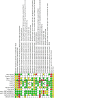
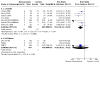



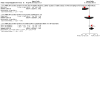


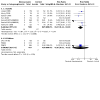
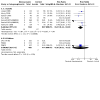
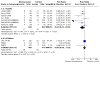




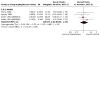
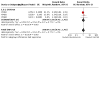
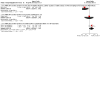
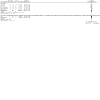
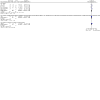
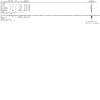



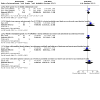
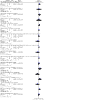


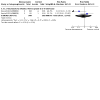

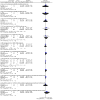

Update of
References
References to studies included in this review
DFCI 95‐01 {published data only}
-
- Barry EV, Vrooman LM, Dahlberg SE, Neuberg DS, Asselin BL, Athale UH, et al. Absence of secondary malignant neoplasms in children with high-risk acute lymphoblastic leukaemia treated with dexrazoxane. Journal of Clinical Oncology 2008;26:1106-11. - PubMed
-
- Lipshultz SE, Miller TL, Scully RE, Lipsitz SR, Rifai N, Silverman LB, et al. Changes in cardiac biomarkers during doxorubicin treatment of pediatric patients with high-risk acute lymphoblastic leukemia: associations with long-term echocardiographic outcomes. Journal of Clinical Oncology 2012;30(10):1042-9. - PMC - PubMed
-
- Lipshultz SE, Rifai N, Dalton VM, Levy DE, Silverman LB, Lipsitz SR, et al. The effect of dexrazoxane on myocardial injury in doxorubicin-treated children with acute lymphoblastic leukemia. New England Journal of Medicine 2004;351:145-53. - PubMed
-
- Lipshultz SE, Scully RE, Lipsitz SR, Sallan SE, Silverman LB, Miller TL, et al. Assessment of dexrazoxane as a cardioprotectant in doxorubicin-treated children with high-risk acute lymphoblastic leukaemia: long-term follow-up of a prospective, randomised, multicentre trial. Lancet Oncology 2010;11:950-61. - PMC - PubMed
Galetta 2005 {published data only}
-
- Galetta F, Franzoni F, Cervetti G, Cecconi N, Carpi A, Petrini M, et al. Effect of epirubicin-based chemotherapy and dexrazoxane supplementation on QT dispersion in non-Hodgkin lymphoma patients. Biomedicine & Pharmacotherapy 2005;59:541-4. - PubMed
Lopez 1998 {published data only}
-
- Lopez M, Vici P, Di Lauro L, Conti F, Paoletti G, Ferraironi A, et al. Randomized prospective clinical trial of high-dose epirubicin and dexrazoxane in patients with advanced breast cancer and soft tissue sarcomas. Journal of Clinical Oncology 1998;16:86-92. - PubMed
-
- Vici P, Ferraironi A, Di Lauro L, Carpano S, Conti F, Belli F, et al. Dexrazoxane cardioprotection in advanced breast cancer patients undergoing high-dose epirubicin treatment. La Clinica Terapeutica 1998;149:15-20. - PubMed
Marty 2006 {published data only}
-
- Marty M, Espie M, Llombart A, Monnier A, Rapoport BL, Stahalova V. Multicenter randomized phase III study of the cardioprotective effect of dexrazoxane (Cardioxane) in advanced/metastatic breast cancer patients treated with anthracycline-based chemotherapy. Annals of Oncology 2006;17:614-22. - PubMed
P9404 {published data only}
-
- Asselin B, Devidas M, Zhou T, Camitta BM, Lipsultz SE. Cardioprotection and safety of dexrazoxane (DRZ) in children treated for newly diagnosed T-cell acute lymphoblastic leukemia (T-ALL) or advanced stage lymphoblastic leukemia (T-LL). Journal of Clinical Oncology 2012;30(15 Suppl):9504. [https://ascopubs.org/doi/abs/10.1200/jco.2012.30.15_suppl.9504] - PMC - PubMed
-
- Asselin BL, Devidas M, Chen L, Franco VI, Pullen J, Borowitz MJ, et al. Cardioprotection and safety of dexrazoxane in patients treated for newly diagnosed T-cell acute lymphoblastic leukemia or advanced-stage lymphoblastic non-Hodgkin lymphoma: a report of the Children's Oncology Group Randomized Trial Pediatric Oncology Group 9404. Journal of Clinical Oncology 2016;34(8):854-62. - PMC - PubMed
-
- Asselin BL, Devidas M, Chen L, Franco VI, Pullen J, Borowitz MJ, et al. Cardioprotection and safety of dexrazoxane in patients treated for newly diagnosed T-cell acute lymphoblastic leukemia or advanced-stage lymphoblastic non-Hodgkin lymphoma: a report of the Children's Oncology Group Randomized Trial Pediatric Oncology Group 9404. Journal of Clinical Oncology 2016;34(8):Erratum for Journal of Clinical Oncology 2017; 35(18): 2100. - PMC - PubMed
-
- Fernández KS, Schwartz CL, Chen L, Constine LS, Chauvenet A, Alarcón PA. Outcome of adolescents and young adults compared to children with Hodgkin lymphoma treated with response-based chemotherapy on pediatric protocols: a Children's Oncology Group report. Pediatric Blood and Cancer 2017;64(12):e26681. - PMC - PubMed
P9425 {published data only}
-
- Schwartz CL, Constine LS, Villaluna D, London WB, Hutchison RE, Sposto R, et al. A risk-adapted, response-based approach using ABVE-PC for children and adolescents with intermediate- and high-risk Hodgkin lymphoma: the results of P9425. Blood 2009;114:2051-9: Erratum for: Blood 2016;128(4):605. - PMC - PubMed
-
- Tebbi CK, London WB, Friedman F, Villaluna D, De Alarcon PA, Constine LS, et al. Dexrazoxane-associated risk for acute myeloid leukemia/myelodysplastic syndrome and other secondary malignancies in pediatric Hodgkin's disease. Journal of Clinical Oncology 2007;25:493-500. - PubMed
P9426 {published data only}
-
- Chow EJ, Asselin B, Schwartz CL, Doody D, Leisenring WM, Aggarwal S, et al. Late mortality and relapse after dexrazoxane (DRZ) treatment: an update from the Children's Oncology Group (COG). Journal of Clinical Oncology 2014;32(15 Suppl):10024. [https://ascopubs.org/doi/abs/10.1200/jco.2014.32.15_suppl.10024]
-
- Tebbi CK, London WB, Friedman D, Villaluna D, De Alarcon PA, Constine LS, et al. Dexrazoxane-associated risk for acute myeloid leukemia/myelodysplastic syndrome and other secondary malignancies in pediatric Hodgkin's disease. Journal of Clinical Oncology 2007;25(5):493-500. - PubMed
-
- Tebbi CK, Mendenhall NP, London WB, Williams JL, Hutchison RE, Fitzgerald TJ, et al. Response-dependent and reduced treatment in lower risk Hodgkin lymphoma in children and adolescents, results of P9426: a report from the Children's Oncology Group. Pediatric Blood and Cancer 2012;59(7):1259-65. - PMC - PubMed
Speyer 1992 {published data only (unpublished sought but not used)}
-
- Speyer JL, Green MD, Kramer E, Rey M, Sanger J, Ward C, et al. Protective effect of the bispiperazinedione ICRF-187 against doxorubicin-induced cardiac toxicity in women with advanced breast cancer. New England Journal of Medicine 1988;319:745-52. - PubMed
-
- Speyer JL, Green MD, Sanger J, Zeleniuch-Jacquotte A, Kramer E, Rey M, et al. A prospective randomized trial of ICRF-187 for prevention of cumulative doxorubicin-induced cardiac toxicity in women with breast cancer. Cancer Treatment Reviews 1990;17:161-3. - PubMed
-
- Speyer JL, Green MD, Zeleniuch-Jacquotte A, Wernz JC, Rey M, Sanger J, et al. ICRF-187 permits longer treatment with doxorubicin in women with breast cancer. Journal of Clinical Oncology 1992;10(1):117-27: Erratum for: Journal of Clinical Oncology 1992;10(5):867. - PubMed
-
- Speyer JL, Green MD, Zeleniuch-Jacquotte A, Wernz JC, Rey M, Sanger J, et al. ICRF-187 permits longer treatment with doxorubicin in women with breast cancer. Journal of Clinical Oncology 1992;10(1):117-27. - PubMed
Sun 2016 {published data only}
-
- ChiCTR-IPR-16007759. Cardiotoxicity induced by epirubicin-based chemotherapy for early stage breast cancer patients with diabetes and the protection of dexrazoxane. Chinese Clinical Trial Registry: www.chictr.org.cn 2016.
-
- Sun F, Qi X, Geng C, Li X. Dexrazoxane protects breast cancer patients with diabetes from chemotherapy-induced cardiotoxicity. American Journal of the Medical Sciences 2015;349(5):406-12. - PubMed
Swain 1997a(088001) {published data only}
-
- Bates M, Lieu D, Zagari M, Spiers A, Williamson T. A pharmacoeconomic evaluation of the use of dexrazoxane in preventing anthracycline-induced cardiotoxicity in patients with stage IIIB or IV metastatic breast cancer. Clinical Therapeutics 1997;19:167-84. - PubMed
-
- Rosenfeld CS, Weisberg SR, York RM, Jones SE, Spicer DV, Khojasteh A, et al. Prevention of adriamycin cardiomyopathy with dexrazoxane (ADR-529, ICRF-187). In: Proceedings of ASCO. Vol. 11. 1992:62.
-
- Swain SM, Whaley FS, Gerber MC, Ewer MS, Bianchine JR, Gams RA. Delayed administration of dexrazoxane provides cardioprotection for patients with advanced breast cancer treated with doxorubicin-containing therapy. Journal of Clinical Oncology 1997;15:1333-40. - PubMed
-
- Swain SM, Whaley FS, Gerber MC, Weisberg S, York M, Spicer D, et al. Cardioprotection with dexrazoxane for doxorubicin-containing therapy in advanced breast cancer. Journal of Clinical Oncology 1997;15:1318-32. - PubMed
-
- Tonkin K, Bates M, Lieu D, Arundell E, Williamson TY, Zagari M. Dexrazoxane cardioprotection for patients receiving FAC chemotherapy: a pharmacoeconomic evaluation. Annals of Cancer Control Research 1996;6:458-73. - PubMed
Swain 1997a(088006) {published data only}
-
- Bates M, Lieu D, Zagari M, Spiers A, Williamson T. A pharmacoeconomic evaluation of the use of dexrazoxane in preventing anthracycline-induced cardiotoxicity in patients with stage IIIB or IV metastatic breast cancer. Clinical Therapeutics 1997;19:167-84. - PubMed
-
- Rosenfeld CS, Weisberg SR, York RM, Jones SE, Spicer DV, Khojasteh A, et al. Prevention of adriamycin cardiomyopathy with dexrazoxane (ADR-529, ICRF-187). In: Proceedings of ASCO. Vol. 11. 1992:62.
-
- Swain SM, Whaley FS, Gerber MC, Ewer MS, Bianchine JR, Gams RA. Delayed administration of dexrazoxane provides cardioprotection for patients with advanced breast cancer treated with doxorubicin-containing therapy. Journal of Clinical Oncology 1997;15:1333-40. - PubMed
-
- Swain SM, Whaley FS, Gerber MC, Weisberg S, York M, Spicer D, et al. Cardioprotection with dexrazoxane for doxorubicin-containing therapy in advanced breast cancer. Journal of Clinical Oncology 1997;15:1318-32. - PubMed
-
- Tonkin K, Bates M, Lieu D, Arundell E, Williamson TY, Zagari M. Dexrazoxane cardioprotection for patients receiving FAC chemotherapy: a pharmacoeconomic evaluation. Annals of Cancer Control Research 1996;6:458-73. - PubMed
Venturini 1996 {published data only}
-
- Michelotti A, Venturini M, Tibaldi C, Bengala C, Gallo L, Carnino F, et al. Single agent epirubicin as first line chemotherapy for metastatic breast cancer patients. Breast Cancer Research and Treatment 2000;59:133-9. - PubMed
-
- Venturini M, Michelotti A, Del Mastro L, Gallo L, Carnino F, Garrone O, et al. Multicenter randomized controlled clinical trial to evaluate cardioprotection of dexrazoxane versus no cardioprotection in women receiving epirubicin chemotherapy for advanced breast cancer. Journal of Clinical Oncology 1996;14:3112-20. - PubMed
Wexler 1996 {published data only}
-
- Wexler LH, Andrich MP, Venzon D, Berg SL, Weaver-McClure L, Chen CC, et al. Randomized trial of the cardioprotective agent ICRF-187 in pediatric sarcoma patients treated with doxorubicin. Journal of Clinical Oncology 1996;14:362-72. - PubMed
References to studies excluded from this review
Getz 2019 {published data only}
-
- Getz KD, Sung L, Gerbing RB, Alonzo TA, Li Y, Huang YV, et al. Occurrence and resolution of anthracycline cardiotoxicity and impact on treatment outcomes among children treated on the AAML1031 clinical trial: a report from the children's oncology group (Abstract ASH Annual Meeting). Blood 2019;134(Suppl 1):331. [https://ashpublications.org/blood/article/134/Supplement_1/331/426197/Oc...]
Li 2013 {published data only}
-
- Li C, Zhou X, Song X. Protective effects of traditional Chinese medicine injections against anthracycline-induced cardiotoxicity. Anti-tumor Pharmacy 2013;3(5):[No pagination].
Massida 1997 {published data only}
-
- Massidda B, Fenu MA, Ionta MT, Tronci M, Foddi MR, Montaldo C, et al. Early detection of the anthracycline-induced cardiotoxicity. A non-invasive haemodynamic study. Anticancer Research 1997;17:663-8. - PubMed
Neto 2006 {published data only}
-
- Neto RP, Petrilli AS, Silva CM, Campos Filho O, Oporto VM, Gomes LD, et al. Left ventricular systolic function assessed by echocardiography in children and adolescents with osteosarcoma treated with doxorubicin alone or in combination with dexrazoxane. Arquivos Brasileiros de Cardiologia 2006;87:699-706. - PubMed
Paiva 2005 {published data only}
-
- Paiva MG, Petrilli AS, Moises VA, Macedo CR, Tanaka C, Campos O. Cardioprotective effect of dexrazoxane during treatment with doxorubicin: a study using low-dose dobutamine stress echocardiography. Pediatric Blood and Cancer 2005;45:902-8. - PubMed
Rabinovich 2012 {published data only}
-
- Rabinovich A, Weiss D, Weissman M, Novack V, Levi I. Dexrazoxane does not affect treatment outcome in non-Hodgkin's lymphoma patients. American Journal of Hematology 2012;87(8):830-2. - PubMed
Tap 2019 {published data only}
-
- Tap WD, Wagner AJ, Papai Z, Ganjoo KN, Yen C, Schoffski P, et al. ANNOUNCE: a randomized, placebo (PBO)-controlled, double-blind, phase (Ph) III trial of doxorubicin (dox) + olaratumab versus dox + PBO in patients (pts) with advanced soft tissue sarcomas (STS). Journal of Clinical Oncology 2019;37(18 Suppl):LBA3. [https://ascopubs.org/doi/abs/10.1200/JCO.2019.37.18_suppl.LBA3]
Wang 2020 {published data only}
-
- Wang Y, Lu C, Li H, Liu K, Yu M, Zhang P. 3D-STI evaluation of the effect of dexrazoxane on the mechanical properties of right ventricular myocardium in breast cancer patients treated with pirarubicin. Annals of Palliative Medicine 2020;9(3):1187-97. - PubMed
References to studies awaiting assessment
Aggarwal 2018 {published data only}
-
- Aggarwal S, Chow EJ, Sasaki N, Doody DR, Armenian SH, Asselin BL, et al. Long-term cardioprotective effects of dexrazoxane infusion during anthracycline chemotherapy: a children's oncology group speckle echocardiography study. Journal of the American Society of Echocardiography (Abstract ASE Annual Meeting) 2018;31(6):B14-5.
Cardenas 2003 {published data only}
-
- Cardenas R, Mercado CG, Rivela LR, Calderon EC. Effectiveness and safety of dexrazoxane as a cardioprotector in Mexican children with cancer. Medical and Pediatric Oncology 2003;41:PL001.
Chow 2016 {published data only}
-
- Chow EJ, Doody DR, Armenian SH, Aggarwal S, Baker KS, Bhatia S, et al. Effect of dexrazoxane on heart function among long-term survivors of childhood leukemia and lymphoma: a report from the children's oncology Group (COG) (Abstract ASH Annual Meeting). Blood 2016;128(22):696.
-
- NCT01790152. Effects of dexrazoxane hydrochloride on biomarkers associated with cardiomyopathy and heart failure after cancer treatment. clinicaltrials.gov/ct2/show/NCT01790152 (first received 13 February 2013).
De Berranger 2006 {published data only}
-
- De Berranger E, Vaksmann G, Thebaud-Leculee E, Wyckaert I, Mazingue F, Francart C et al. Results of randomized study on dexrazoxane administration in children with de novo acute leukemia. Journal of Clinical Oncolgy 2006;24(18):9037.
Feldmann 1992 {published data only}
-
- Feldmann JE, Jones SE, Weisberg SR, Gandars DR, Lyman GH, York RM, et al. Advanced small cell lung cancer treated with CAV (cyclophosphamide + adriamycin + vincristine) chemotherapy and the cardioprotective agent dexrazoxane (ADR-529, ICRF-187, Zinecard). In: ASCO Annual Meeting. Vol. 11. 1992:296.
Jackowska 2003 {published data only}
-
- Jackowska T, Rokicka-Milewska R, Matysiak M, Balwierz W, Kowalczyk J, Wachowiak J, et al. Assessment of dexrazoxane tolerance in leukemic children receiving anthracyclines. Medical and Pediatric Oncology 2003;41:PD003.
Liu 2013 {published data only}
-
- Liu H, Yanqiu L, Fengjuan Y, Hong L, Cuilling L, Rui F, et al. Cardiac diastolic dysfunction may hold promise as markers of cardiotoxicity during daunorubicin treatment in acute nonlymphocytic leukemia patients (Abstract Asia Pacific Heart Congress). Heart 2013;99(3):A273.
Saad El‐Din 2003 {published data only}
-
- Saad El-Din I, El Saban K, Abdel Rahman K, Gabaly M. A randomized clinical trial to evaluate cardioprotective effect of ICRF-187 in children with acute lymphoblastic leukemia. Medical and Pediatric Oncology 2003;41:O109.
Ten Bokkel‐Huinink 1992 {published data only}
-
- Ten Bokkel-Huinink WW, Rodenhuis S, Schreuder JE, Dubbelman R, Bierhorst F, Van Tinteren H, et al. ICRF 187 protects against doxorubicin induced cardiomyopathy. Annals of Oncology 1990;1:106.
-
- Ten Bokkel-Huinink WW, Schreuder JE, Dubbelman R, Bierhorst F, Van Tinteren H, Dalesio O, et al. ICRF 187 protects against doxorubicin induced cardiomyopathy. Annals of Oncology 1992;3(Suppl 1):114 (Abstract number 221).
Vejpongsa 2014 {published data only}
-
- Vejpongsa P, Chen M, Araujo DM, Massey MR, Banchs J, Acholonu SA, et al. Comparing the efficacy of primary prevention strategies in doxorubicin-induced cardiotoxicity using echocardiography and high-sensitivity troponin T (Abstract AHA Scientific Sessions and Resuscitation Science Symposium). Circulation 2014;130:A17234.
Wang 2013 {published data only}
-
- Wang P, Zhang S, Zhang XB, Li WJ, Hao XM, Zhang J. Protective effect of dexrazoxane on cardiotoxicity in breast cancer patients who received anthracycline-containing chemotherapy. Chinese Journal of Oncology 2013;35(2):135-9. - PubMed
Zhuang 2012 {published data only}
-
- Zhuang H, Zhang Y, Cai J, Shen J. Clinical study on anthracycline cardiotoxicity reduction by dexrazoxane combined with Shen Mai injection. Chinese Journal of Clinical Oncology 2012;39(6):348-51.
References to ongoing studies
NCT00016276 {published data only}
-
- NCT00016276. Phase III randomised study of doxorubicin and cyclophosphamide with or without dexrazoxane followed by paclitaxel with or without trastuzumab (herceptin) followed by surgery and radiotherapy with or without trastuzumab in women with HER-2+ stage IIIA or IIIB or regional stage IV breast cancer. www.controlled-trials.com (first posted 4 September 2003).
Additional references
Armstrong 2013
Armstrong 2015
-
- Armstrong GT, Joshi VM, Ness KK, Marwick TH, Zhang N, Srivastava D, et al. Comprehensive echocardiographic detection of treatment-related cardiac dysfunction in adult survivors of childhood cancer: results from the St. Jude Lifetime Cohort Study. Journal of the American College of Cardiology 2015;65:2511-22. - PMC - PubMed
Batist 2001
-
- Batist G, Ramakriskan G, Sekhar Rao C, Chandrasekharan A, Gutheil J, Guthrie T, et al. Reduced cardiotoxicity and preserved antitumor efficacy of liposome-encapsulated doxorubicin and cyclophosphamide compared with conventional doxorubicin and cyclophosphamide in a randomized multicenter trial of metastatic breast cancer. Journal of Clinical Oncology 2001;19:1444-54. - PubMed
Billingham 1978
-
- Billingham ME, Mason JW, Bristow MR, Daniels JR. Anthracycline cardiomyopathy monitored by morphologic changes. Cancer Treatment Reports 1978;62(6):865-72. - PubMed
Bonadonna 1969
-
- Bonadonna G, Morfandini S. Cardiac toxicity of daunorubicin. Lancet 1969;1:837. - PubMed
Chellapandian 2019
-
- Chellapandian D, Pole JD, Nathan PC, Sung L. Congestive heart failure among children with acute leukemia: a population-based matched cohort study. Leukemia & Lymphoma 2019;20:385-94. - PubMed
Chow 2015
Chow 2021
Cooper 2020
De Baat 2022
-
- De Baat EC, Dalen EC, Mulder RL, Hudson MM, Ehrhardt MJ, Engels FK, et al. Primary cardioprotection with dexrazoxane in childhood cancer patients expected to receive anthracyclines: recommendations from the International Late Effects of Childhood Cancer Guideline Harmonization Group. Lancet Child & Adolescent Health 2022;published online September 26. [DOI: 10.1016/S2352-4642(22)00239-5] - DOI - PubMed
Deng 2014
Feijen 2019a
Feijen 2019b
Fidler 2017
Fojtu 2017
-
- Fojtu M, Gumulec J, Stracina T, Raudenska M, Skotakova A, Vaculovicova M, et al. Reduction of doxorubicin-induced cardiotoxicity using nanocarriers: a review. Current Drug Metabolism 2017;18(3):237-63. - PubMed
Gammella 2014
GRADEpro GDT [Computer program]
-
- GRADEpro GDT. Version accessed prior to 25 May 2022. Hamilton (ON): McMaster University (developed by Evidence Prime), 2022. Available at gradepro.org.
Groenewegen 2020
Guyot 2012
Hawkins 2020
-
- Hawkins M, Bhatia S, Henderson TO, Nathan PC, Yan A, Teepen JC, et al. Subsequent primary neoplasms: risks, risk factors, surveillance, and future research. Pediatric Clinics of North America 2020;67(6):1135-54. - PubMed
Higgins 2006
-
- Higgins JPT, Green S, editors. Cochrane Handbook for Systematic Reviews of Interventions 4.2.5 [updated September 2006]. John Wiley & Sons, Ltd, In: The Cochrane Library, Issue 4, 2006. Chichester, UK.
Higgins 2008
-
- Higgins JPT, Green S, editors. Cochrane Handbook for Systematic Reviews of Interventions Version 5.0.1 [updated September 2008]. The Cochrane Collaboration, 2008. Available from www.cochrane-handbook.org, 2008.
Higgins 2011
-
- Higgins JP, Green S, (editors). Cochrane Handbook for Systematic Reviews of Interventions Version 5.1.0 (updated March 2011). The Cochrane Collaboration, 2011. Available from training.cochrane.org/handbook/archive/v5.1/.
Higgins 2021
-
- Higgins JP, Thomas J, Chandler J, Cumpston M, Li T, Page MJ, et al (editors). Cochrane Handbook for Systematic Reviews of Interventions version 6.2 (updated February 2021). Cochrane, 2021. Available from www.training.cochrane.org/handbook.
Hori 2017
-
- Hori H, Kudoh T, Nishimura S, Oda M, Yoshida M, Hara J, et al. Acute and late toxicities of pirarubicin in the treatment of childhood acute lymphoblastic leukemia: results from a clinical trial by the Japan Association of Childhood Leukemia Study. International Journal of Oncology 2017;22(2):387-96. - PubMed
Kearns 2003
-
- Kearns GL, Abdel-Rahman SM, Alander SW, Blowey DL, Leeder JS, Kauffman RE. Developmental pharmacology-drug disposition, action, and therapy in infants and children. New England Journal of Medicine 2003;349(12):1157-67. - PubMed
Keizer 1990
-
- Keizer HG, Pinedo HM, Schuurhuis GJ, Joenje H. Doxorubicin (adriamycin): a critical review of free radical-dependent mechanisms of cytotoxicity. Pharmacology and Therapeutics 1990;47:219-31. - PubMed
Kremer 2002a
-
- Kremer LC, Van Dalen EC, Offringa M, Voute PA. Frequency and risk factors of anthracycline-induced heart failure in children: a systematic review. Annals of Oncology 2002;13:819-29. - PubMed
Kremer 2002b
-
- Kremer LC, Van Dalen EC, Offringa M, Voute PA. Frequency and risk factors of anthracycline-induced heart failure in children: a systematic review. Annals of Oncology 2002;13:503-12. - PubMed
Le Deley 2003
-
- Le Deley M, Leblanc T, Shamsaldin A, Raquin M, Lacour B, Sommelet D, et al. Risk of secondary leukemia after a solid tumor in childhood according to the dose of epipodophyllotoxins and anthracyclines: a case-control study by the Société Française d'Oncologie Pédiatrique. Journal of Clinical Oncology 2003;21(6):1074-81. - PubMed
Leerink 2020
-
- Leerink JM, Baat EC, Feijen EA, Bellersen L, Van Dalen EC, Grotenhuis HB, et al. Cardiac disease in childhood cancer survivors: risk prediction, prevention, and surveillance: JACC CardioOncology State-of-the-Art Review. Journal of the American College of Cardiology: CardioOncology 2020;2:363-78. - PMC - PubMed
Lefrak 1973
-
- Lefrak EA, Pitha J, Rosenheim S, Gottlieb JA. A clinicopathologic analysis of adriamycin cardiotoxicity. Cancer 1973;32:302-14. - PubMed
Legha 1982
-
- Legha SS, Benjamin RS, Mackay B, Ewer M, Wallace S, Valdivieso M, et al. Reduction of doxorubicin cardiotoxicity by prolonged continuous intravenous infusion. Annals of Internal Medicine 1982;96:133-9. - PubMed
Lipshultz 1998
-
- Lipshultz SE, Sallan SE, Giantris AL, Lipsitz SR, Dalton V, Colan SD. 48 hour continuous doxorubicin infusion is not cardioprotective in children assessed 18 months later: the DFCI 91001 ALL protocol. Proceedings of the American Society of Clinical Oncology 1998;17:528a.
Loeffen 2018
-
- Loeffen EA, Van Dalen EC, Mulder RL, Van de Wetering MD, Kremer LC, Tissing WJ. The duration of anthracycline infusion should be at least one hour in children with cancer: a clinical practice guideline. Pediatric Blood & Cancer 2018;65:Epub. - PubMed
Lyu 2007
-
- Lyu YL, Kerrigan JE, Lin CP, Azarova AM, Tsai YC, Ban Y, et al. Topoisomerase IIbeta mediated DNA double-strand breaks: implications in doxorubicin cardiotoxicity and prevention by dexrazoxane. Cancer Research 2007;67(18):8839-46. - PubMed
Merkx 2021
Mertens 2008
Miller 1981
-
- Miller AB, Hoogstraten B, Staquet M, Winkler A. Reporting results of cancer treatment. Cancer 1981;47:207-14. - PubMed
Muggia 1991
-
- Muggia FM, Green MD. New anthracycline antitumor antibiotics. Critical Reviews in Oncology/hematology 1991;11:43-64. - PubMed
Muggia 1997
-
- Muggia FM, Hainsworth JD, Jeffers S, Miller P, Groshen S, Tan M, et al. Phase II study of liposomal doxorubicin in refractory ovarian cancer: antitumor activity and toxicity modification by liposomal encapsulation. Journal of Clinical Oncology 1997;15:987-93. - PubMed
Mulrooney 2020
Myers 1998
-
- Myers C. The role of iron in doxorubicin-induced cardiomyopathy. Seminars in Oncology 1998;25 Suppl 10:10-14. - PubMed
Nemade 2018
Odaimi 1987
-
- Odaimi M, Ajani J. High-dose chemotherapy. American Journal of Clinical Oncology 1987;10:123-32. - PubMed
Oken 1982
-
- Oken MM, Creech RH, Tormey DC, Horton J, Davis TE, McFadden ET, et al. Toxicity and response criteria of the Eastern Cooperative Oncology Group. American Journal of Clinical Oncology 1982;5:649-55. - PubMed
Parmar 1998
-
- Parmar MK, Torri V, Stewart L. Extracting summary statistics to perform meta-analyses of the published literature for survival endpoints. Statistics in Medicine 1998;17:2815-34. - PubMed
Pierga 2001
-
- Pierga JY, Robain M, Jouve M, Asselain B, Dieras V, Beuzeboc P, et al. Response to chemotherapy is a major parameter-influencing long-term survival of metastatic breast cancer patients. Annals of Oncology 2001;12:231-7. - PubMed
Pritchard‐Jones 2015
-
- Pritchard-Jones K, Bergeron C, Camargo B, Van den Heuvel-Eibrink MM, Acha T, Godzinski J, et al. Omission of doxorubicin from the treatment of stage II-III, intermediate-risk Wilms' tumour (SIOP WT 2001): an open-label, non-inferiority, randomised controlled trial. Lancet 2015;386(9999):1156-64. - PubMed
Review Manager 2020 [Computer program]
-
- Review Manager 5 (RevMan 5). Version 5.4. Copenhagen: Nordic Cochrane Centre, The Cochrane Collaboration, 2020.
RevMan Web 2021 [Computer program]
-
- Review Manager Web (RevMan Web). Version 3.1.2. The Cochrane Collaboration, 2021. Available at revman.cochrane.org.
Seif 2015
Stata 2005 [Computer program]
-
- Stata Statistical Software. Version Release 9. StataCorp LP, College Station, TX: StataCorp, 2005.
Travis 2013
-
- Travis LB, Demark Wahnefried W, Allan JM, Wood ME, Ng AK. Aetiology, genetics and prevention of secondary neoplasms in adult cancer survivors. Nature Reviews. Clinical Oncology 2013;10(5):289-301. - PubMed
Turcotte 2018
Van Dalen 2006
-
- Van Dalen EC, Van der Pal HJ, Kok WE, Caron HN, Kremer LC. Clinical heart failure in a cohort of children treated with anthracyclines: a long-term follow-up study. European Journal of Cancer 2006;42(18):3191-8. - PubMed
Van Dalen 2010
Van Dalen 2014
Van Dalen 2016
Van der Pal 2012
-
- Van der Pal HJ, Van Dalen EC, Van Delden E, Van Dijk IW, Kok WE, Geskus RB, et al. High risk of symptomatic cardiac events in childhood cancer survivors. Journal of Clinical Oncology 2012;30(13):1429-37. - PubMed
Von Hoff 1979
-
- Von Hoff DD, Layard MW, Basa P, Davis HL Jr, Von Hoff AL, Rozencweig M, et al. Risk factors for doxorubicin-induced congestive heart failure. Annals of Internal Medicine 1979;91:710-7. - PubMed
References to other published versions of this review
Van Dalen 2002
Van Dalen 2005
Van Dalen 2008
Van Dalen 2011
-
- Van Dalen EC, Caron HN, Dickinson HO, Kremer LC. Cardioprotective interventions for cancer patients receiving anthracyclines. Cochrane Database of Systematic Reviews 2011, Issue 6. Art. No: CD003917. [DOI: 10.1002/14651858.CD003917.pub4] - DOI
Publication types
MeSH terms
Substances
LinkOut - more resources
Full Text Sources
Medical

